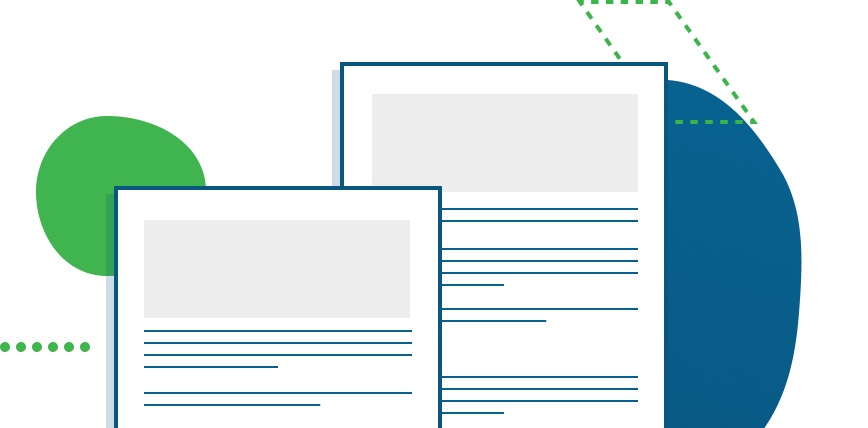by Michele Gobbo, Designer in Excellence Innovation
Human-computer interaction is experiencing a radical transformation. Traditional user interfaces, based on the desktop metaphor, are giving way to new paradigms that leverage artificial intelligence (AI) to create more intuitive and powerful experiences.
Hybrid interaction interfaces are emerging as an innovative approach that combines the strengths of traditional graphical user interfaces (GUIs) with advances in AI and intent-based interaction.
From desktop to hybrid interaction
For decades, GUIs have dominated human-computer interaction, giving users precision, control, and immediate feedback. However, the file, application and mouse-based approach is starting to look obsolete and no longer suited to the needs of modern users. As a result, interfaces based exclusively on commands can be complex, especially for repetitive tasks or those that involve many steps.
The advent of AI, particularly large language models (LLMs), has ushered in the era of intention-based interaction. In this new paradigm, users declare the desired outcome and trust the system to perform the task, offering greater flexibility and efficiency.
The concept of hybrid interface
Hybrid interfaces aim to leverage the strengths of both paradigms:
GUIs remain essential for tasks that require precision and direct control, such as graphic design or programming.
Intention-based interaction is ideal for complex tasks, where the user specifies a goal and the system executes it.
For example, to manage an investment portfolio, a hybrid interface combines intent-based interaction, which allows users to declare their financial goals and risk preferences in a natural, conversational way, with graphical interface elements (GUI) to refine details, such as selecting specific stocks or funds from a displayed list.
Challenges in designing hybrid interfaces
Designing hybrid interfaces presents several significant challenges. First, finding the right balance between automation and user control is key. While offloading tasks to AI can improve efficiency, it is crucial to ensure that users always feel in control and able to understand and modify system actions. Transparency plays a key role in this context: users must be able to understand how AI makes decisions and what to do when errors occur.
Another important challenge concerns the level of human involvement. Designers must carefully consider how to adapt the system to different user preferences. In some cases, AI can act as an autonomous agent for tasks where users prefer to delegate control because they are repetitive and boring. In others, especially for tasks that are creative or require precise control, AI might take on a “co-pilot” role, offering suggestions and assistance.
Finally, onboarding and continuous feedback are a crucial challenge. It is essential to help users understand the mental model of the hybrid interface through a gradual presentation of AI-based features. Clearly explaining what the system can and cannot do, and providing intuitive feedback mechanisms, can foster user trust and adoption.
Design principles for hybrid interfaces
When designing effective hybrid interfaces, it is critical to follow a few key principles. User-centricity must be at the heart of every design decision, requiring an in-depth understanding of users’ needs, goals and context of use. This understanding guides all other design choices.
Clarity and transparency are essential to building user trust. Interactions must be easily understandable, and the consequences of actions must be clear. At the same time, it is important to keep the user in control, always guaranteeing the possibility to modify or cancel the actions taken by the system.
Iterative design is another key principle. Involving users throughout the design process, collecting continuous feedback, allows you to refine the interface and ensure that it truly meets user needs. This approach also helps identify and resolve potential problems before they become critical.
Finally, finding the right balance between familiarity and innovation: designers must create experiences that build on existing mental models, while providing adequate guidance that supports the use of new features. This approach helps users feel comfortable with the interface, while introducing powerful new AI-powered capabilities.
Integrating AI should not be a sprint but a marathon
The race to AI is pushing many companies and designers to quickly integrate advanced technologies into user interfaces, but it’s crucial to proceed with accuracy. The risk is that of making hasty and poorly thought-out implementations. To avoid this, designers should ask themselves fundamental questions:
Does AI integration solve a real user need?
Is it aligned with the company strategy?
Is it scalable and flexible for the future?
A fundamental and complex challenge is the need to fully understand how these new technologies are powered. While designers have a solid grasp of user-centric principles and practices, the technical complexity of AI can create a disconnect between their design skills and the technical skills of their engineering colleagues.
Bridging this gap requires designers to gain a solid understanding of the basic principles of AI. This knowledge is fundamental for three reasons: it allows you to communicate effectively with developers, it allows you to make more informed design decisions and it ensures perfect integration between the user experience and the technological potential of AI.
Conclusion
Hybrid interaction interface design aims to create systems that amplify human capabilities, not replace them. It’s about finding a balance between the power of AI and the value of human judgment to create efficient, enjoyable and rewarding user experiences.
The future of user interfaces isn’t simply adding AI capabilities where you see the opportunity, but creating truly user-centric experiences. The adaptive interfaces of the future will be able to dynamically change based on the specific needs of each user, overcoming the “one-size-fits-all” paradigm that has characterized traditional design.
A crucial aspect of this evolution is data generation and analysis. Hybrid interfaces, thanks to their interactive and adaptive nature, generate significantly more data than traditional interfaces. This data becomes a valuable resource for design, allowing decisions based on concrete evidence and facilitating the continuous optimization of the user experience.
Designers who successfully navigate this transition will be able to create products that not only meet the needs of today’s users, but also anticipate those of tomorrow, always respecting ethical principles and accessibility.
